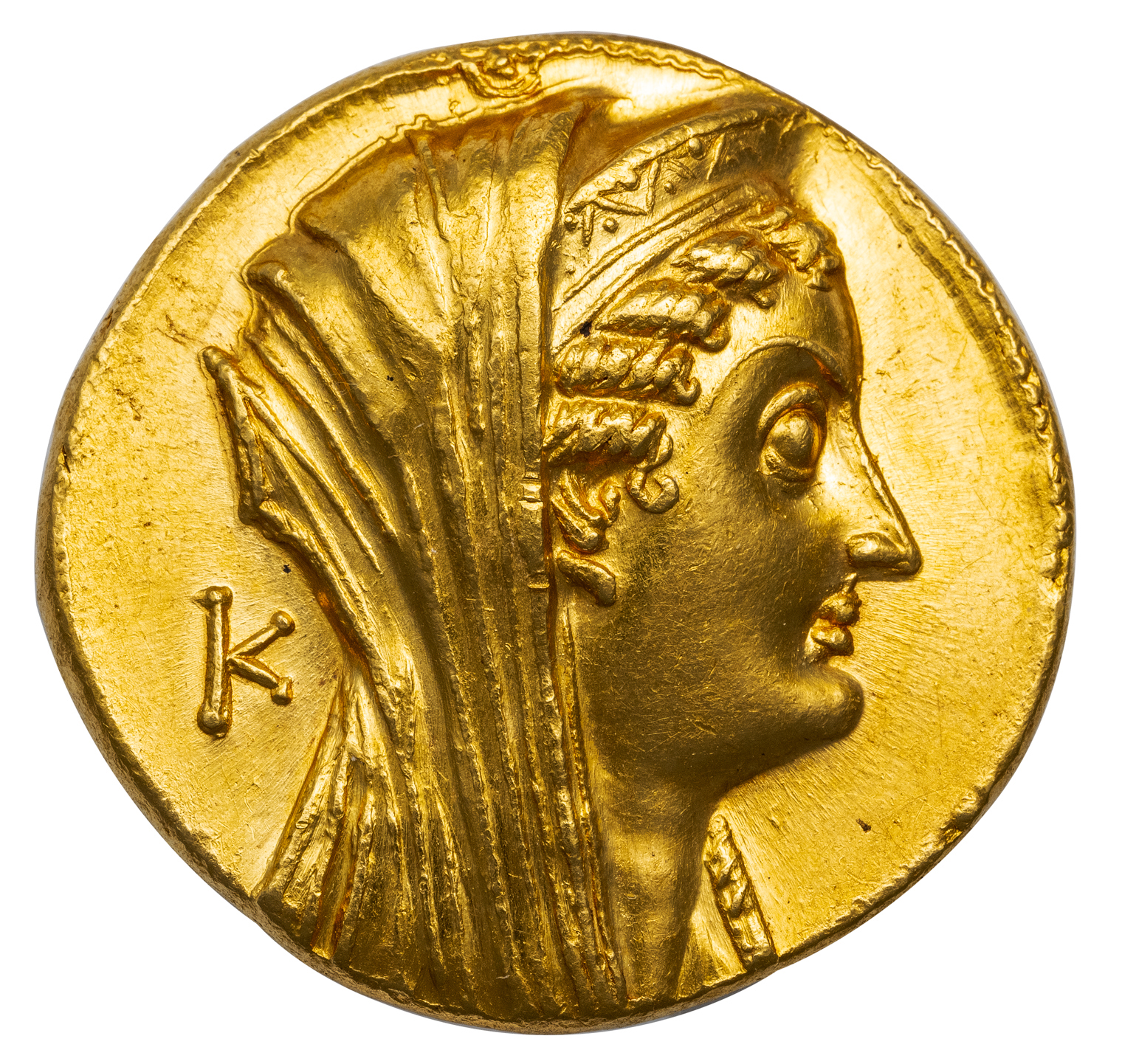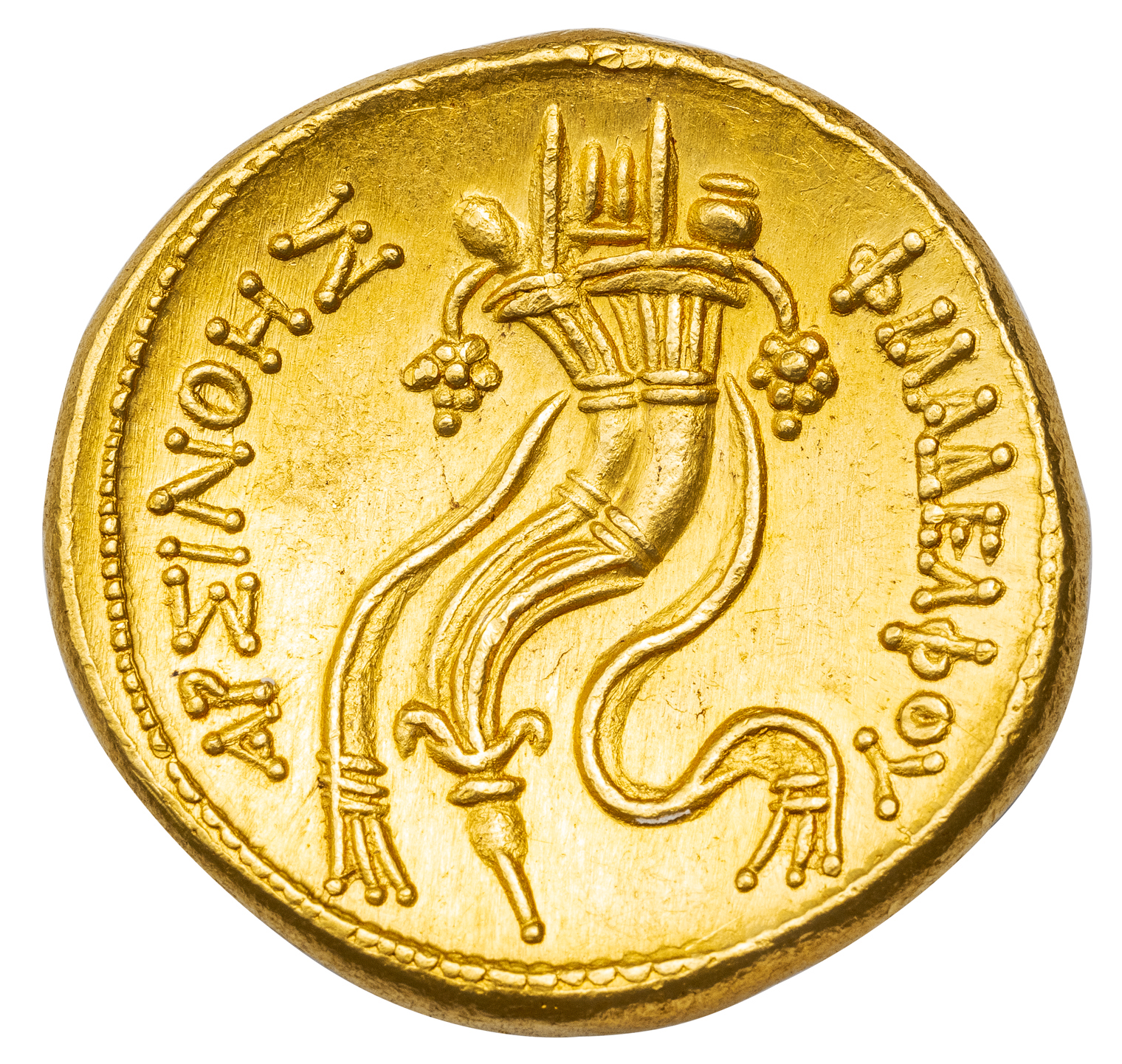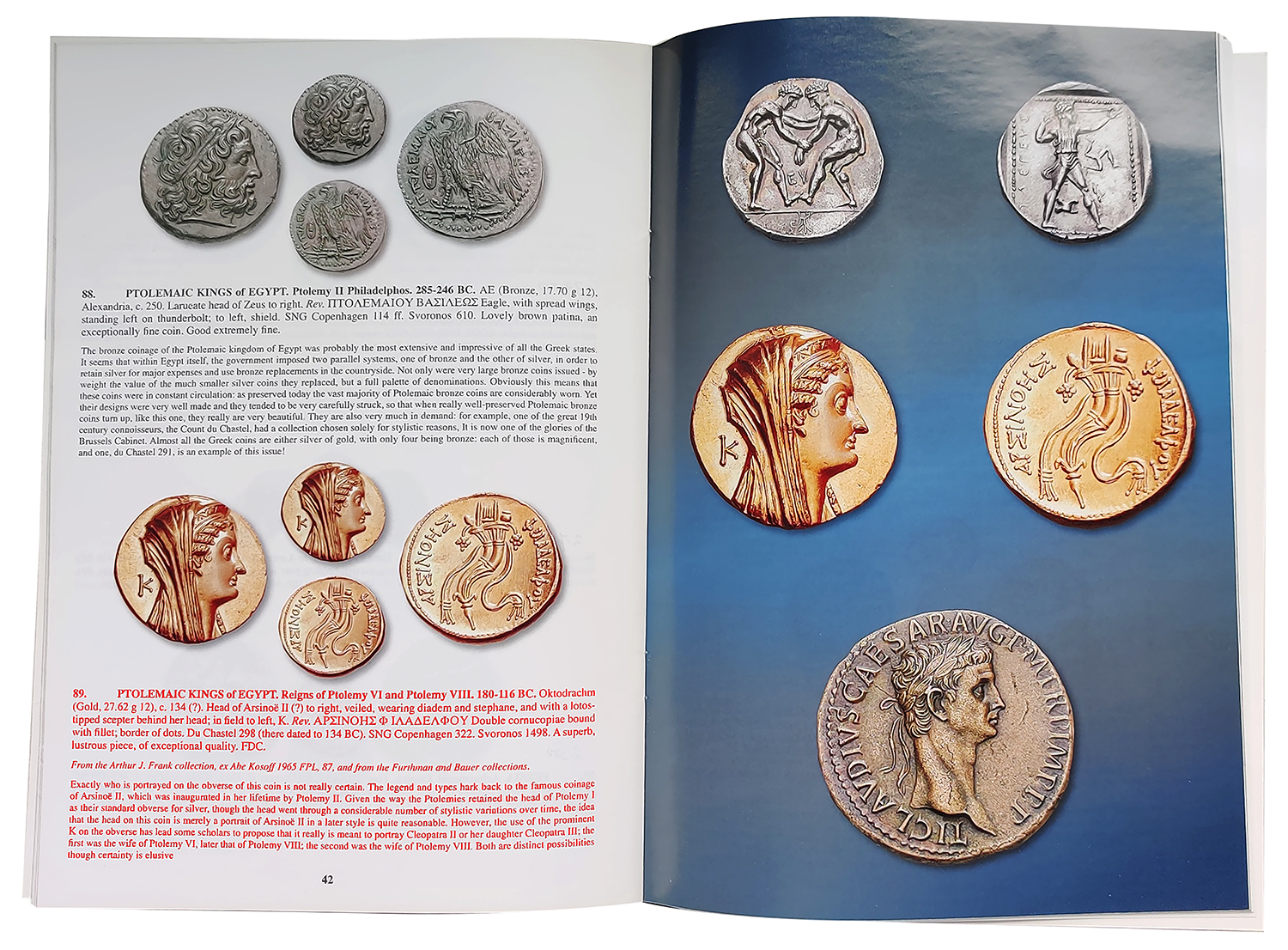ARSINOE GOLD MNAIEION – SUPERB SPECIMEN EX KOSOFF FPL OF 1965 – MINT STATE NGC GRADED GREEK PTOLEMAIC KINGDOM COIN (Inv. 19405)
$57,500.00
19405. EGYPT, PTOLEMAIC KINGDOM. ARSINOE II, died 270 BC.
Gold Mnaieion (Octodrachm), 27.62 g, 27 mm. Issue of Alexandria, struck c. 140–131 and 126–117 BC or later.
Obv. Veiled head of Arsinoe Philadelphus right, with ram’s horn curling around ear, wearing diademed stephane and holding lotus scepter over far shoulder, K behind head. Rev. AΡΣINOHΣ ΦIΛAΔEΛΦOΥ, double cornucopiae bound with royal diadem.
CPE II (forthcoming), K48 (obverse die 59); cf. Svoronos 1499; cf. SNG Copenhagen 322; Olivier, Archè et Chrèmata en Égypteau II e siècle avant J.–C. (204 – 81 av. J.–C.) Étude de numismatique et d’histoire (Orleans: IRAMAT, 2012), 3556 (same dies) = Pozzi Collection 3247; Svoronos 1498; SNG Copenhagen 322.
Ex Arthur J. Frank Collection, Classical Numismatic Group, private sale (15 January 2009), Nomos/CNG Fixed Price List, Winter–Spring 2009, lot 89 = ex Furthman and Bauer Collections, Abe Kosoff Fixed Price List (10/13/1965), lot 87.
NGC graded MINT STATE, Strike 5/5, Surface 4/5, lustrous and absolutely superb, struck from fresh, high relief dies.
Svoronos believed that the differing facial features on the obverse portraits of Ptolemaic mnaieia marked with the letter K indicated they were intended to represent reigning queens of the second century BC rather than Arsinoe II, despite the reverse legend naming the archetypical Egyptian queen. This view has been partially endorsed by Catharine Lorber in the forthcoming volume of Coins of the Ptolemaic Empire. This particular piece was struck with obverse die 49, belonging to her issue K48, which depicts a portrait aiming at a representation of Arsinoe II, possibly with features of Cleopatra III. While there may be some question about which queen the engraver was trying to depict, there can be no doubt that this spectacular high-relief coin would make the centerpiece of any Ptolemaic collection.
This coin is struck from the same dies as the specimen in the Pozzi collection cited in Olivier’s die study. In fact the coin’s obverse and the illustrated Pozzi cast bear an uncanny resemblance, including the numerous imperfections of the rim. The cast’s reverse, on the other hand, appears to be double struck at the bottom. Even though some of Naville’s casts of the Pozzi collection pieces are imperfectly made, it is impossible to be sure whether this coin is indeed the Pozzi specimen.






